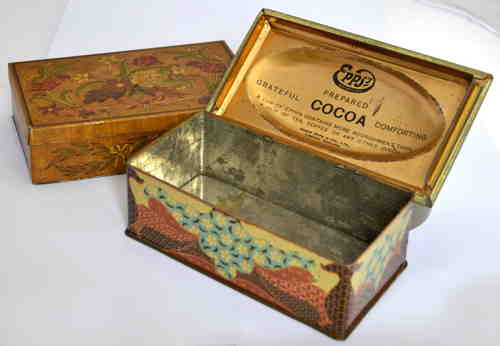Founded in 1817 in London, Taylor Brothers established one of the country's biggest cocoa factories and had considerable cocoa-making expertise. Almost 60 years later Joseph Rowntree actively recruited Taylor Brothers' staff for their knowledge.
In 1873 virtually its entire factory at Brick Lane and Wentworth Street was destroyed by fire, but it recovered quickly and expanded its range to around 50 different types of drinking cocoas. Taylor Brothers claimed to be the largest manufacturer of cocoa in Europe around 1880. The most successful product was Maravilla Cocoa, which was sold in tin-lined packets by grocers nationwide. Twenty years later a disastrous diversification into confectionery left the company in deep trouble.
Founded in 1839 by homoeopathic chemist James Epps, who later owned a cocoa plantation in Jamaica and his own ship to transport the crop, the Epps Cocoa London factory occupied an area of about two acres. In 1879 the company claimed to be making five million pounds in weight of cocoa yearly. One group of sailors owed their lives to drinking Epps' cocoa morning, noon and night. Cargo sailing ship the Dunskeig ran ashore near Cape Horn. Most of the crew died, and the remaining few made their way along shore to find help. A second ship, the Colorado, also ran ashore and its crew marched for days until they met up with the Dunskeig survivors. The cargo from the Dunskeig had washed ashore and included a large quantity of Epps cocoa. The 25 men lived entirely on cocoa until they were rescued.
James Epps & Co acquired the troubled Taylor Brothers in 1908, and was itself bought by Rowntree in 1925. Epps Homoeopathic Cocoa disappeared from sale when its factory was finally closed in 1931.
EXHIBIT - LONDON

It was common for chocolate manufacturers to have a tin-plate box works of their own, producing beautiful and now collectable - but most importantly re-usable - containers.

